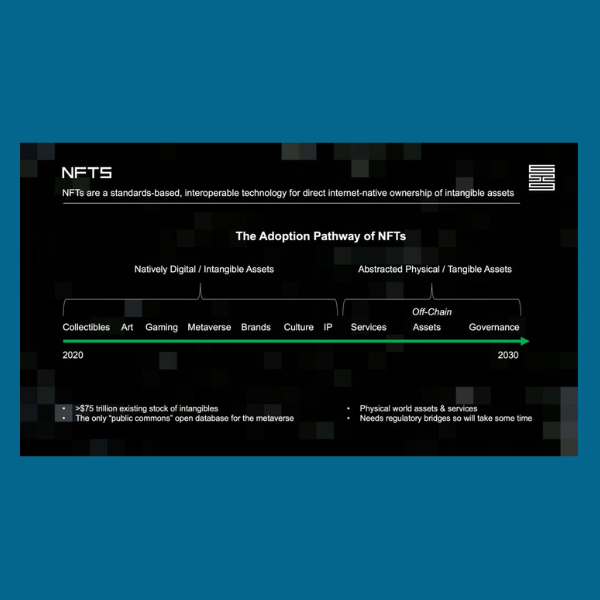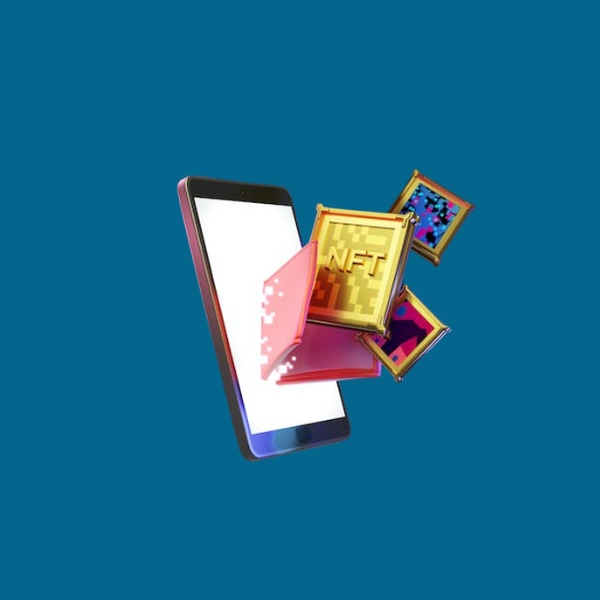Historical timeline
The story of what we now call NFTs started on May 3, 2014 when Kevin McCoy created Quantum, the world's first NFT. Before that, there were ideas and NFT-like experiments that have contributed to lay a foundation for today's NFTs. Here we give you an insight into historically important projects and events during the NFT age.
1993, idea
In an email Hal Finney sent to Cypherpunks, he predicted NFTs back in 1993. Hal Finney was also the first recipient of Bitcoin in a transaction conducted by Satoshi Nakamoto, the founder of Bitcoin, in 2009.
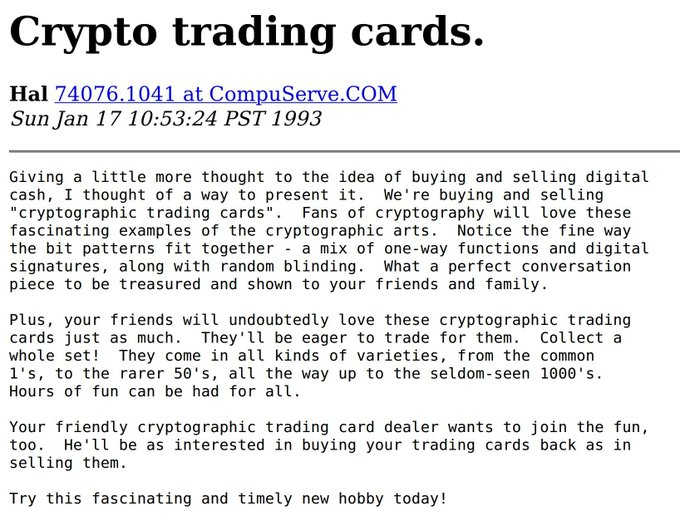
2012, the foundation of NFTs
Colored coins
The idea of NFTs was resurrected with Colored Coins, which originally were issued on the Bitcoin blockchain in 2012. Colored Coins are tokens that represent real assets and can be used to prove ownership of everything from precious metals to cars, real estate and stocks.
Colored Coins opened the door for further experimentation and laid a foundation for NFTs where the potential began to emerge but was limited by the Bitcoin blockchain.

2014, the world's first NFT
Quantum
The first NFT, Quantum, was created by Kevin McCoy and Anil Dash in May 2014 on the Decentralized Name Registry Database Namecoin.
Quantum was not known as an NFT when it was created as the term NFT did not enter the lexicon until September 20, 2017, when Dieter Shirley used the term in his documentation regarding ERC-721 which later became the universal token standard for NFTs. ERC-721 is the reason we celebrate International NFT Day on September 20, the day the term NFT was officially coined.
Quantum was sold in 2021 at Sotheby's for 1.4 million dollars after the original was recreated on the Ethereum blockchain.
2014, NFT platform
Counterparty;
The platform Counterparty; was founded in 2014 by Robert Dermody, Adam Krellenstein and Evan Wagner as a peer-to-peer financial platform and an open source distributed internet protocol on the Bitcoin blockchain.
Counterparty enabled issuing assets on the blockchain, had a decentralized exchange and its own token, XCP. The platform at the time had several projects and assets, including card game trading and memes.

2015, NFT card game
Spells of Genesis on Counterparty
In April 2015, the card game Spells of Genesis was launched on Counterparty. In addition to pioneering the issue of gaming assets on a blockchain, the creators also launched one of the first Initial Coin Offerings (ICO).
The Spells of Genesis creators funded the development of the game by introducing their own token which was used as in-game currency.
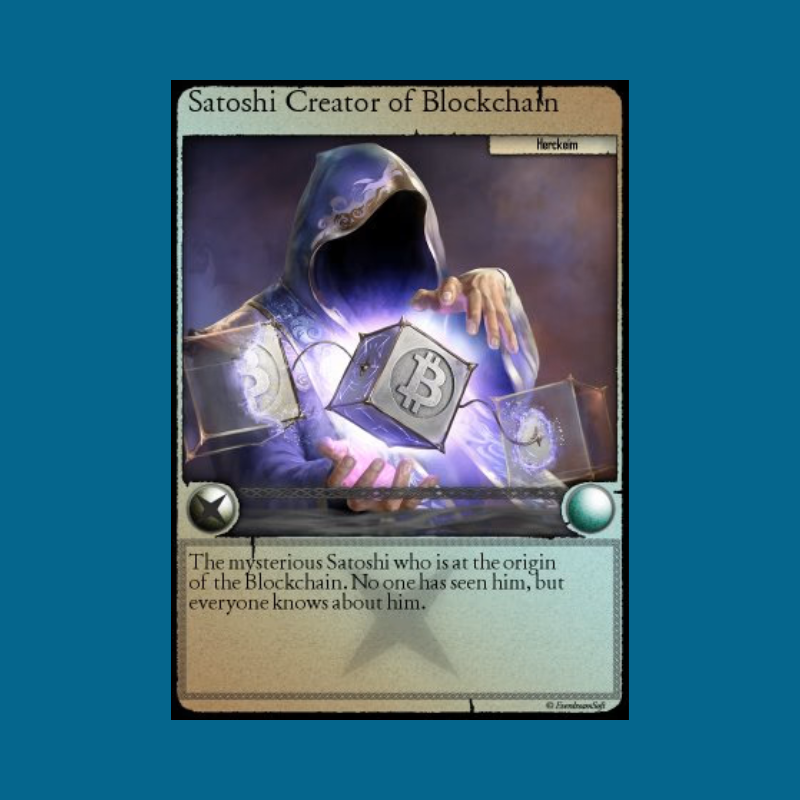
2016, additional NFT card games
Force of Will on Counterparty
In August 2016, the popular card game Force of Will was released on Counterparty. In terms of sales Force of Will was, at the time, the fourth highest ranked card game in North America behind Pokémon, Yu-Gi-Oh and Magic: The Gathering.
The entry of a traditional company like Force of Will Co Ltd into blockchains and cryptocurrencies sent signals about the value of being able to place assets on the blockchain.
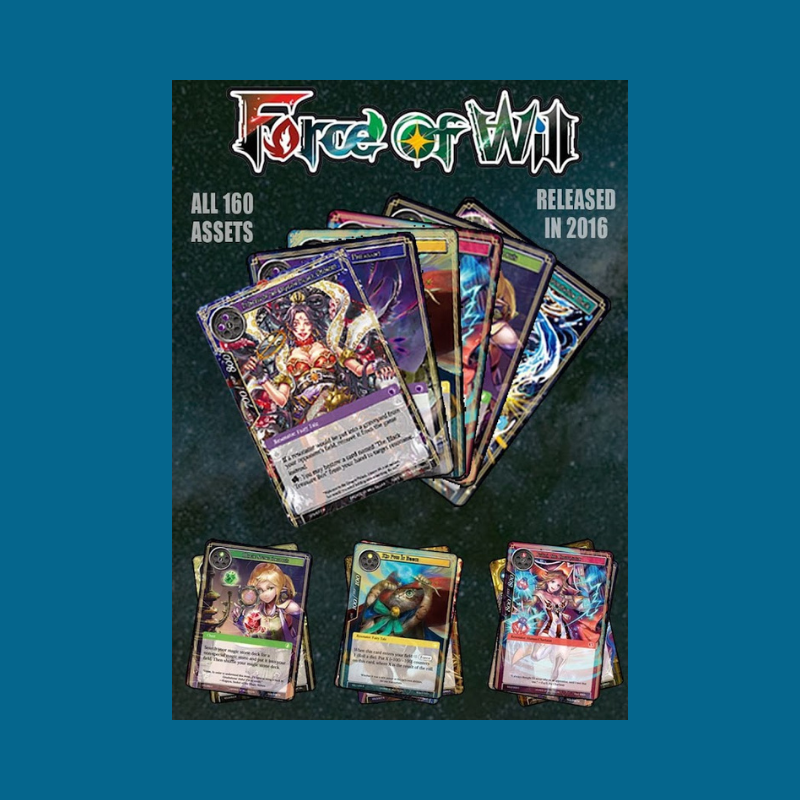
2016, NFT memes
Rare Pepes on Counterparty
In September 2016 Rare Pepes was born on Counterparty when the Nakamoto Card was created which sparked an art movement that keeps growing today.
What started out as a comic character named Pepe the Frog, has over time become an internet sensation and one of the most popular memes. The character Pepe the Frog was created by Matt Fury already in 2005 and has strongly contributed to the emergence and interest in Rare Pepes.

2017, more NFT memes
Rare Pepes on Ethereum
When Ethereum started to gain popularity in early 2017, memes also started trading there. In March 2017, the Peperium project was launched, a decentralized meme marketplace and card game that allowed anyone to create memes on the Ethereum blockchain.
Like Counterparty, Peperium also had its own token, RARE, which was used when creating memes and to pay fees.

2017, the first pfp collection
CryptoPunks
After interest in Rare Pepes took off, John Watkinson and Matt Hall, the founders of Larva Labs, created unique characters on the Ethereum blockchain in June 2017. No two characters were alike and the collection was limited to 10,000 characters. The project name, CryptoPunks, refers to the Cypherpunks, a movement that experimented with precursors to Bitcoin in the 1990s.
Anyone with a crypto wallet on Ethereum could claim a CryptoPunk, for free. All 10,000 CryptoPunks were claimed rather quickly, giving rise to a secondary market where people bought and sold them. CryptoPunks is considered the first pfp collection and has contributed to lay a foundation that has inspired many NFT collections over time.

2017, NFTs popularized on Ethereum
CryptoKitties
CryptoKitties was launched in October 2017 by the company Axiom Zen. The project was released during ETH Waterloo Hackathon, the world's largest hackathon for the Ethereum ecosystem, where the CryptoKitties team won first place.
CryptoKitties is a blockchain-based game that allows players to adopt, raise and trade virtual cats on the blockchain. Through CryptoKitties, NFTs broke into the mainstream media where the project was frequently seen in news media, ranging from Dagens Nyheter to BBC. Partly because people bought, bred and traded virtual cats like crazy and partly because it caused Ethereum to clog due to all the blockchain transactions with the cats.
CryptoKittie's success opened the eyes of many to the potential of NFTs. Axiom Zen then started Dapper Labs which later launched NBA Top Shot.

2017, NFT rocks on Ethereum
EtherRock
EtherRock was launched in December 2017 and was thus one of the early NFT collections issued on the Ethereum blockchain. Only 100 stones in different color shades were created.
Shortly after the project was launched, it was largely forgotten until 2021 when the remaining stones, which had not yet been released, were minted by collectors.
The creator of EtherRock has said that very little effort was put into the NFT collection and that he only built the smart contract and website to practice using Solidity (the programming language of Ethereum). Despite this, several stones have been sold for millions of dollars since their rediscovery in 2021.

2018, gaming NFTs
Axie Infinity
Trung Nguyen together with Sky Mavis, created Axie Infinity in March 2018 following inspiration from Pokémon. Axie Infinity is a Play-to-Earn (P2E) games and a virtual world built on the Ethereum blockchain. Players can collect, breed, and trade pets known as Axies in the game.
All assets in the game are represented by tokens or NFTs and can thus be traded on various marketplaces for blockchain-based assets. The game became very successful over time as people realized that it was possible to make real money while playing a game.
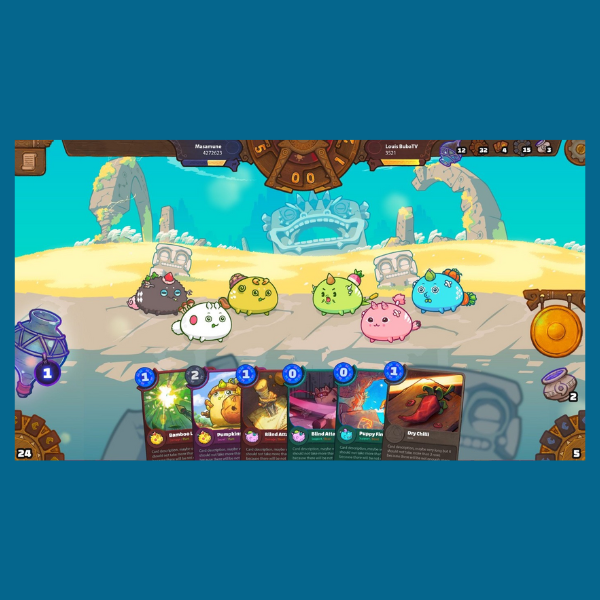
2019, on-chain generative art
Autoglyphs
Larva Labs launched Autoglyphs in April 2019 as the first on-chain generative art on Ethereum. In Autoglyphs, the artwork exists within the smart contract itself that exists on the blockchain, it is literally on-chain.
All Autoglyphs were created by code running on the Ethereum blockchain. Anyone who donated the fee to create an Autoglyph (0.2 ETH) to Larva Labs' chosen charity project could create an Autoglyph while simultaneously becoming the first owner of an Autoglyph. After 512 Autoglyphs were created, the generator, which by code generated all the Autoglyphs, shut itself down forever.
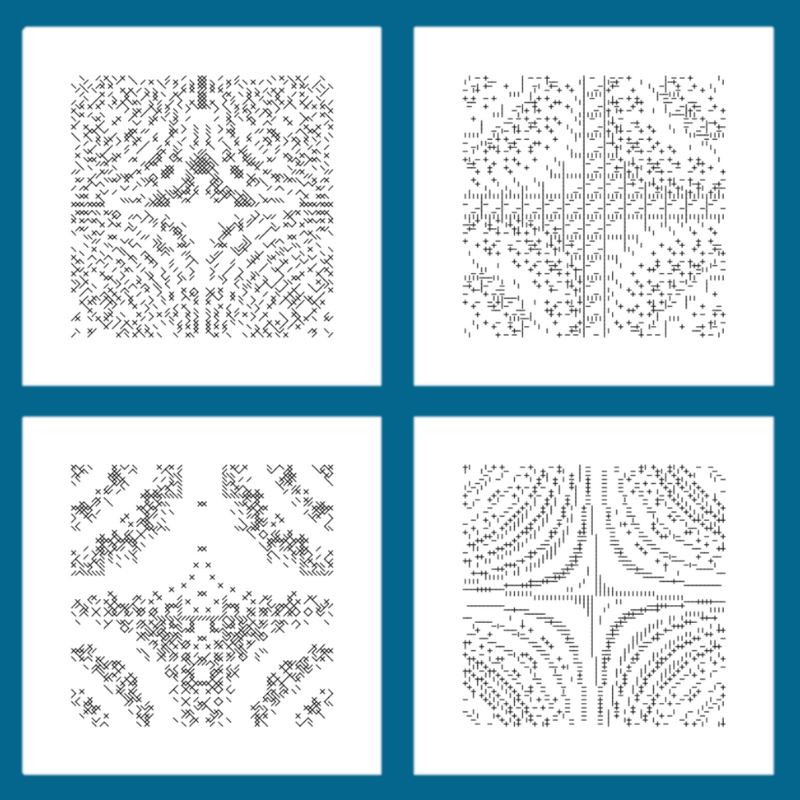
2020, generative art platform
Art Blocks
Since Erick Calderon launched Art Blocks in November 2020, the platform has established itself as a prominent platform for generative art in the NFT space.
Erick Calderon created the first collection, Chromie Squiggle, after which creators such as Tyler Hobbs, Dmitri Cherniak, Matt Kane and Kjetil Golid have released generative art collections as NFTs on the platform.
Art Blocks' success has contributed to a growing interest in generative art and in the creators who have issued artwork through the platform.
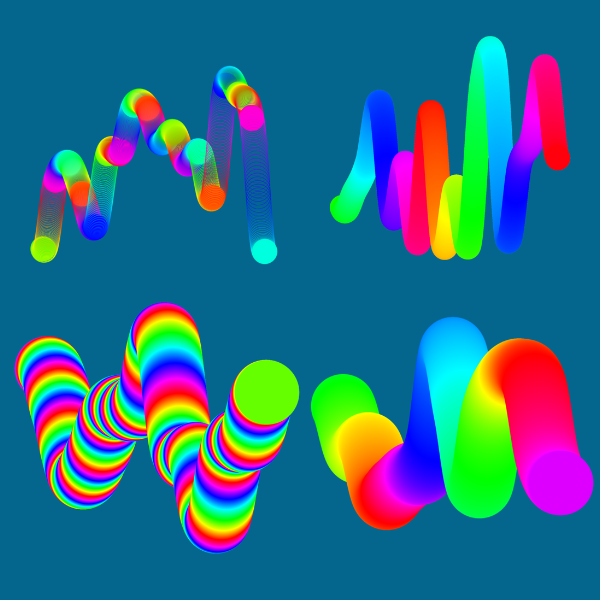
2021, NFT sold for 69 million dollars
Everydays: the First 5,000 Days
In March 2021, an NFT was sold by the creator Beeple for 38,525 ETH, equivalent to 69 million dollars at the time, on an auction at Christie's. The artwork is a collage of digital images Beeple took every day from May 1, 2007 through January 7, 2021, a total of 5,000 days straight.
Not only was this the most expensive NFT sale ever, it also created a snowball effect in the mainstream media that sparked the interest in NFTs to quickly spread worldwide.
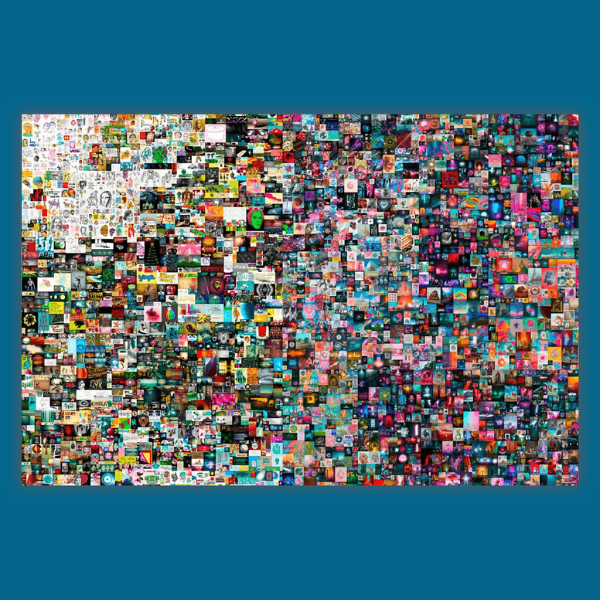
Today and the future
The NFT revolution
NFT as a new technology, which in turn provides a new asset class, is emerging right before our eyes and will lead to many opportunities for those who venture into the NFT space. In the coming years, more and more brands and companies will issue NFTs of various kinds. Already today we see Adidas launching an NFT collection, Nike acquiring an NFT studio, Starbucks introducing NFTs for its loyalty program and Meta building its own metaverse platform.
Throughout history, humanity has experienced times of great technological advancement and significant societal change. The development of transport, the spread of mass media, the rise of the internet; all these events changed the world and societies significantly.
With NFTs we are now taking the next step in evolution when it comes to communication and relationship between people and the ability to express ourselves as individuals or members of a specific community. NFTs have already given rise to a new dimension of creativity, innovation and freedom – even though we have only scratched the surface.
